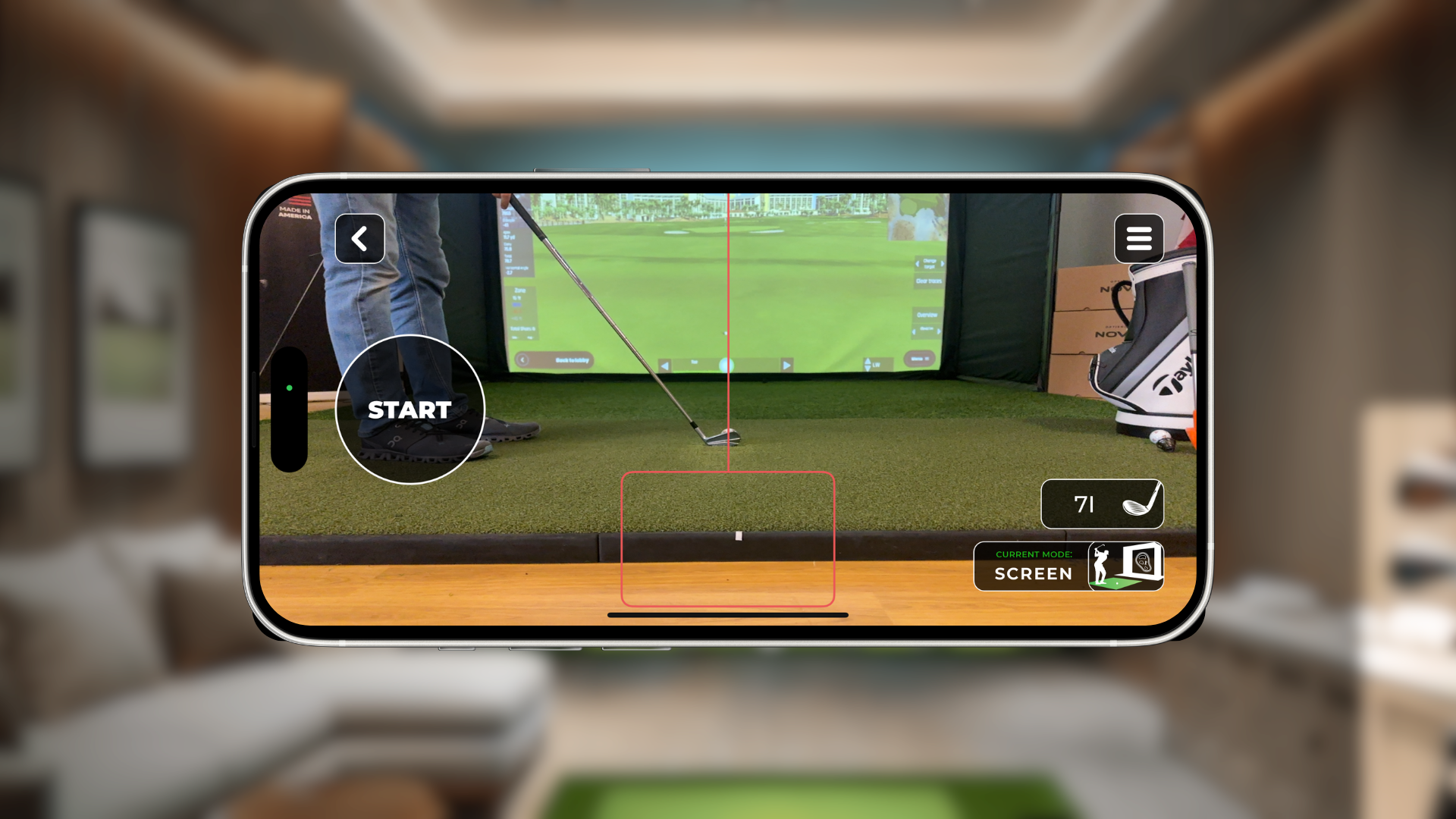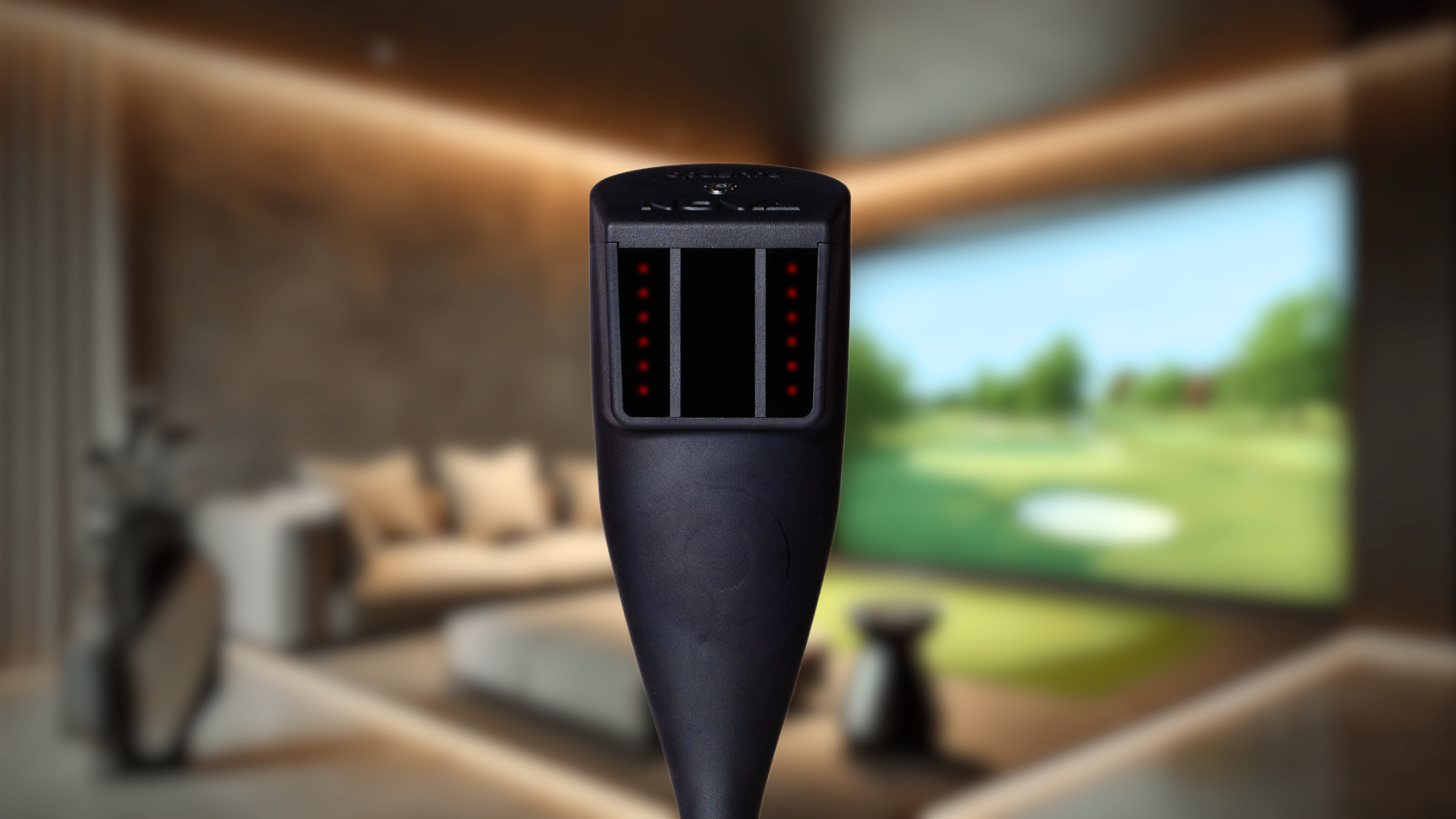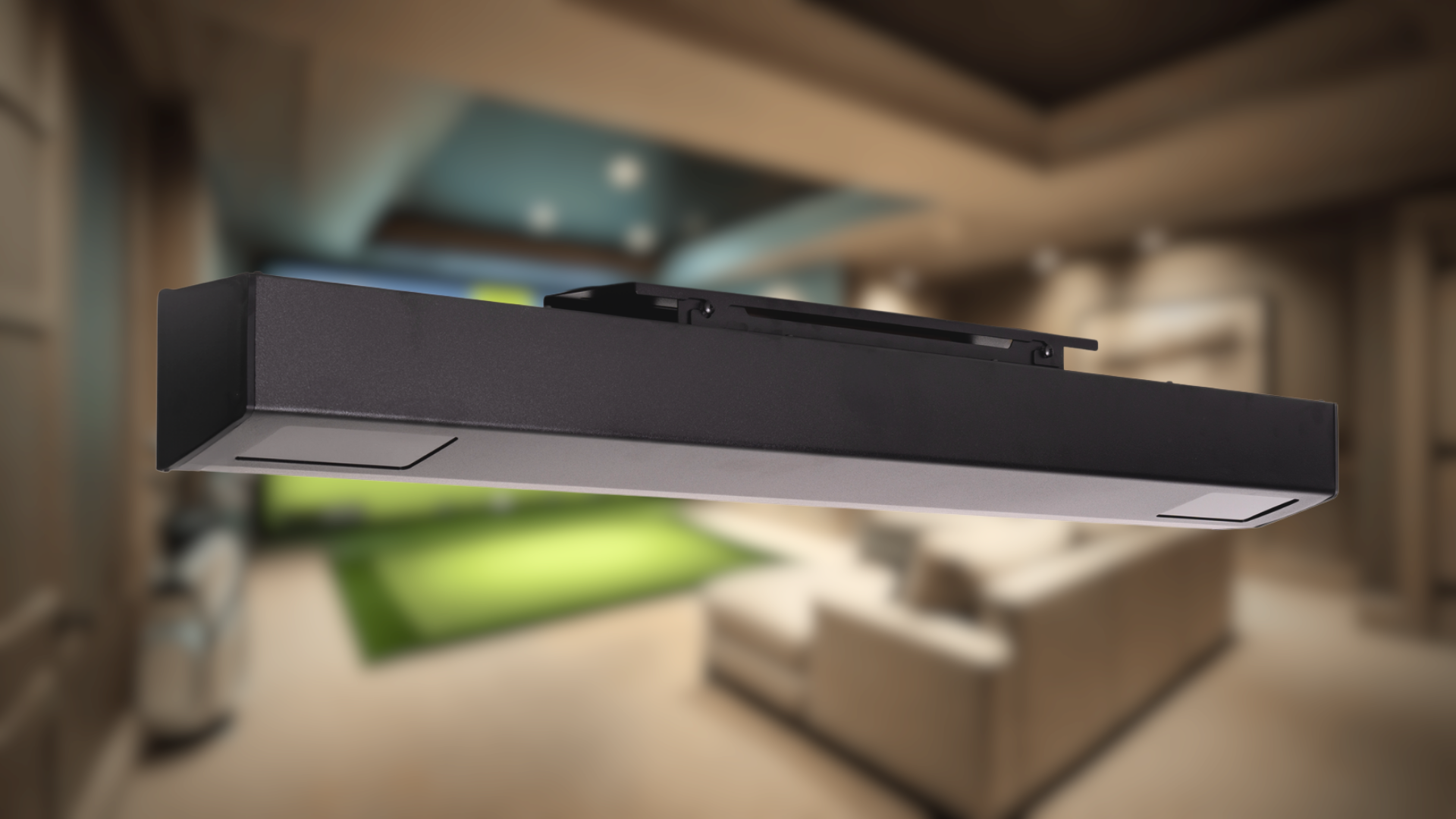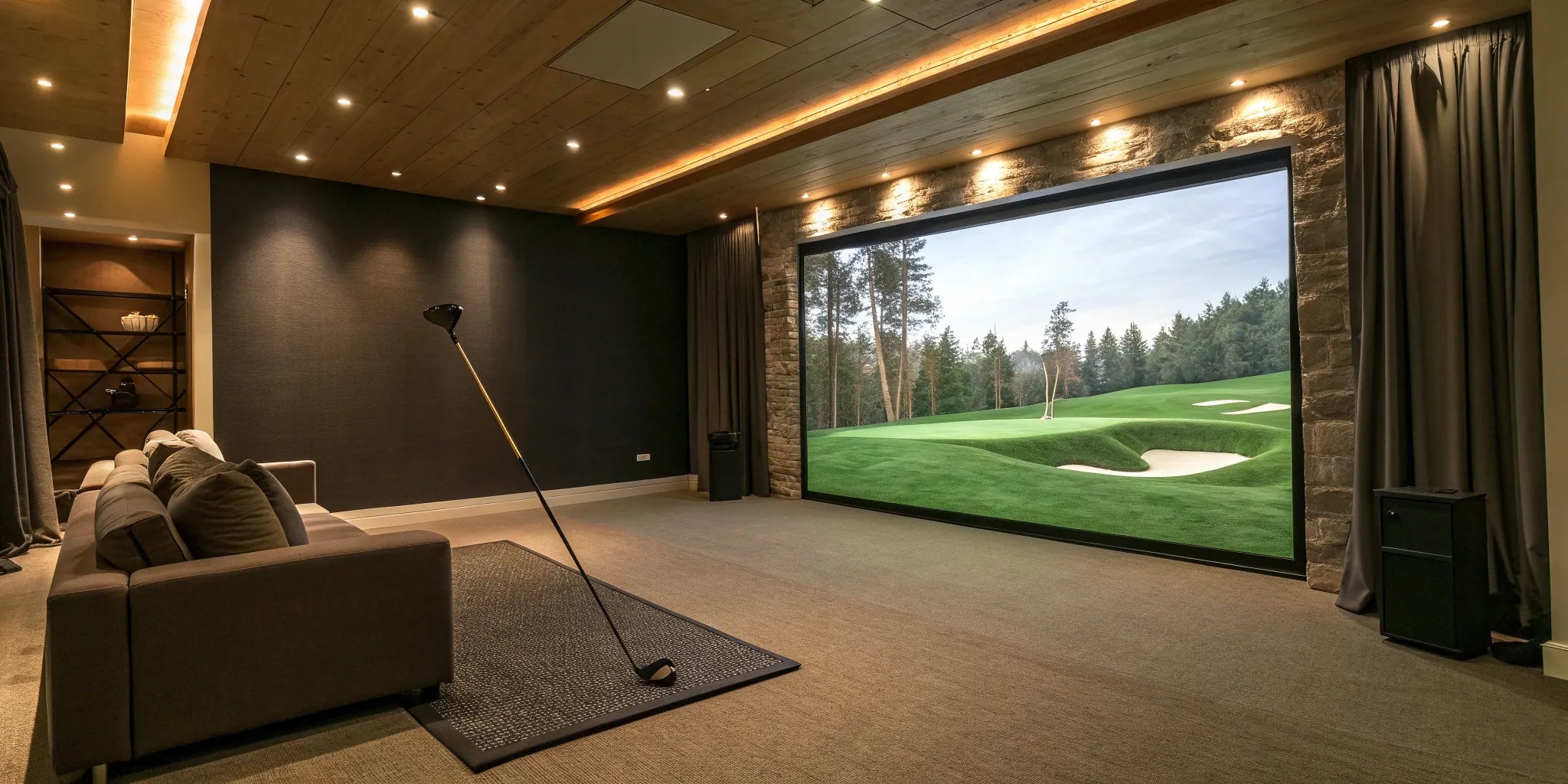Putting together a golf simulator is a bit like building a custom PC or a home theater system—the final price is the sum of its parts. You’re in the driver’s seat, choosing each component to fit your specific needs and budget. The heart of the system, the launch monitor, can range from hundreds to tens of thousands of dollars, and every other piece, from the hitting mat to the projector, has a similar spectrum of options. This modular approach is great because it offers incredible flexibility. Understanding the golf simulator home setup cost is about learning what each piece does so you can decide where to invest and where you can save to create the perfect system for you.
要点
- Build to Your Budget: A simulator's cost is entirely up to you. Focus your initial investment on a quality launch monitor and hitting mat, as these form the core of your setup, and know that you can find a great system whether you're spending $3,000 or $30,000.
- Prioritize Your Space: Before looking at any equipment, measure your room. You need at least 10 feet of height, 15 feet of width, and 20 feet of depth to swing freely and safely. This single factor will determine the type of simulator you can realistically build.
- Plan Beyond the Initial Purchase: Think of your simulator as a long-term project, not a one-time buy. Factor in future costs like software subscriptions and eventual replacements for your screen and mat, and remember you can always upgrade components over time.
What's in a Golf Simulator Setup?
Putting together a golf simulator might sound complex, but it really boils down to a few core components working together to bring the course to you. Think of it like building a home theater—you need a screen, a player, and something to watch. A golf simulator is similar, just a lot more interactive. The key is understanding what each piece does so you can choose the right gear for your space and your game. Once you have the essentials in place, you can be teeing off from your favorite room in the house, no matter the weather outside.
The Essential Gear
Every golf simulator has a few non-negotiables. The heart of the entire system is the launch monitor, a device that tracks your club and ball data to replicate your shot on screen. Next, you need simulator software to translate that data into a virtual round of golf. To play safely, you’ll need an enclosure and impact screen to hit into, which stops the ball and doubles as your display. A quality hitting mat gives you a realistic turf feel for your shots. Finally, a projector throws the image from your software onto the screen, creating that immersive experience. You can often find these items packaged together in convenient simulator bundles that take the guesswork out of it.
どのくらいのスペースが必要か?
Before you start shopping, grab a tape measure. The amount of space you have will be the biggest factor in determining your setup. For a comfortable experience where you can swing freely without worrying about walls or ceilings, you’ll want a room that is at least 10 feet high, 15 feet wide, and 20 feet deep. If you have up to 25 feet of depth, that’s even better, as it gives you more room between you and the screen. The goal is to be able to take a full, confident swing with your driver. If you’re unsure how your room measures up, you can always customize your golf room with our planning tools to see what fits.
The Price of Each Component
Building a golf simulator is a bit like building a custom PC—you can pick and choose parts to fit your budget and goals. While you can get an all-in-one package, understanding the cost of each piece helps you know where to spend and where you can save. Let's break down the main components and what you can expect to pay for each.
Launch Monitors and Tracking Systems
The launch monitor is the heart and brain of your entire setup. This device uses high-speed cameras or Doppler radar to track your club and ball data, translating your real-world swing into the digital realm. The price range here is wide, reflecting the technology's accuracy and the number of data points it measures. Budget-friendly options start around $500, while professional-grade systems can exceed $25,000. Mid-range launch monitors, which offer a great balance of accuracy and features for home use, typically fall between $2,000 and $7,000.
Screens, Nets, and Enclosures
You need a safe place to hit your ball, and that’s where screens, nets, and enclosures come in. A simple, durable hitting net is your most affordable option, costing between $300 and $1,500. For a more immersive experience, an impact screen designed to absorb the ball's force and display a projected image is key. A standalone screen might cost $300 to $900. A full enclosure, which includes a screen, side walls, and a ceiling, provides the most professional and safe environment, generally running from $2,000 to $5,000. If you have a unique space, you can also explore custom-built solutions.
Projectors and Displays
To see the virtual fairway stretched out in front of you, you’ll need a quality projector. The main things to look for are brightness (measured in lumens) and resolution. A basic projector suitable for a darker room can be found for $500 to $1,000. For a clearer, brighter image that holds up in rooms with some ambient light, you’ll want to look at mid-range options from $1,000 to $2,500. High-end 4K projectors that deliver a stunningly crisp and realistic picture can cost $2,500 or more. Make sure you choose one with the right "throw ratio" to fit your room's dimensions.
Hitting Mats and Platforms
Don't overlook the hitting mat—it’s your connection to every single shot. A cheap, thin mat can hurt your wrists and won't give you realistic feedback on your shots. While you can find simple mat strips for around $200, investing in a good quality mat is one of the best decisions you can make for your setup. These mats, which cost between $500 and $1,000, are designed to absorb impact correctly and simulate the feel of hitting off real turf. They provide a more authentic experience and help you practice comfortably for hours.
Software and Courses
The software is what brings your simulator to life, letting you play world-famous courses, compete with friends, and analyze your swing. Some launch monitors come with basic practice range software for free. For a more complete experience, you’ll likely be looking at a subscription, which can range from $300 to $1,200 per year depending on the course library and features. Some platforms offer a one-time purchase option, though this is less common. The RSG One software included with our systems gives you access to a huge library of courses and game modes right out of the box.
What Can You Get for Your Money?
So, how much does a great golf simulator really cost? The answer depends entirely on what you want out of it. Your budget will shape everything from the accuracy of your swing data to how immersive your virtual rounds feel. The good news is that you don’t need a PGA Tour-level budget to get a fantastic setup at home. Whether you're looking to dip your toes in with a simple practice station or build a full-blown golf cave, there's a solution that fits your goals.
Think of it as choosing a set of clubs—you can start with a reliable beginner set or go straight for a custom-fitted, top-of-the-line bag. Each tier offers a different level of performance and features. Let's break down what you can expect at the most common price points. This will help you find that perfect sweet spot between your wallet and your golf ambitions, ensuring you invest in a system that you'll love using for years to come. From starter kits to fully customized rooms, we’ll explore what your money can buy. It's all about matching your investment to your passion for the game. A well-chosen simulator isn't just a training tool; it's a year-round source of entertainment and a serious way to lower your handicap, all from the comfort of home.
Entry-Level Setups ($2,000–$5,000)
Think of this as your gateway into the world of home golf. In this price range, you can get a solid setup that includes a reliable launch monitor, a hitting mat, and a net or a basic screen. It’s the perfect starting point for casual golfers or anyone who wants to practice their swing consistently without a huge upfront investment. While you might not get every advanced data metric, you’ll get the core feedback needed to groove your swing and enjoy fun, virtual rounds. Our RSG Mobile is a great example of a powerful, portable option that delivers a fantastic experience in this range.
Mid-Range Systems ($5,000–$15,000)
This is where things get serious, and it's the sweet spot for many dedicated golfers. Moving into the mid-range means you’re investing in higher accuracy, better graphics, and a much more immersive environment. These systems typically feature more advanced launch monitors that track additional data points like club path and face angle. They are often paired with high-quality impact screens and full enclosures that make you feel like you're right on the course. This tier is ideal for players who want reliable data to make real improvements to their game. Our complete simulator bundles are designed to give you a high-performance package right out of the box.
Premium Installations ($15,000+)
If you want the best of the best, this is it. Premium setups deliver tour-level accuracy and a completely seamless, professional-grade experience. We’re talking about the most advanced launch monitors on the market, stunning 4K projection, and custom-built enclosures that transform your space into a true golf sanctuary. This level of investment is for the passionate golfer who demands precision data and wants a stunning entertainment centerpiece for their home. With a premium system like the RSG Pro, you’re not just buying a practice tool; you’re creating the ultimate home golf experience.
Get Your Room Ready for Golf
Once you’ve picked out your gear, the next step is preparing the perfect space for it. The room you choose is just as important as the simulator itself. Creating a safe, comfortable, and functional environment is key to getting the most out of every swing. Think of it as building your personal golf sanctuary. Before you set anything up, you’ll want to consider three main things: the physical dimensions of the room, your electrical and lighting setup, and how you’ll keep the air comfortable. Getting these details right from the start will save you headaches later and make your simulator experience so much better.
Space and Height Requirements
First things first: you need enough room to swing a club freely and safely. As a general rule, you should aim for a space that is at least 10 feet wide, 10 feet long, and has a ceiling height of at least 9 feet. This gives you enough clearance to take a full swing without worrying about hitting a wall or the ceiling. If you can go bigger, do it. A little extra space adds a significant amount of comfort and makes the experience feel less cramped. Before you commit to a room, take a few slow practice swings with your driver to get a real feel for the space. You can even customize your golf room layout to see how different components will fit.
Electrical and Lighting
Your simulator setup—including the launch monitor, projector, and computer—will need a reliable power source. It’s a good idea to have several accessible outlets nearby to avoid running a tangle of extension cords across the floor, which can be a tripping hazard. Lighting is also a critical piece of the puzzle. You need enough light for the tracking system to accurately read your swing, but you also want to avoid casting shadows or creating a harsh glare on the impact screen. Many people find that adjustable track lighting or recessed spotlights positioned behind the hitting area work best. This lets you direct light where you need it while keeping the screen area dim for the best picture quality.
Ventilation
Playing a few rounds on your simulator is a great workout, and you’ll quickly find that a stuffy room can become uncomfortable. Good ventilation is essential for keeping your golf space fresh and pleasant. If your room is in a basement or garage, you might need to add a fan, a portable air conditioner, or a dehumidifier to manage airflow and temperature. A comfortable environment will encourage you to practice more often and for longer periods. Making sure your space is well-ventilated ensures you can enjoy your simulator year-round, whether you’re escaping the summer heat or staying warm during a winter practice session.
Plan for These Other Costs
Beyond the price tags on the main components, a few other expenses can pop up when you're building your home golf simulator. Thinking about these costs ahead of time helps you create a realistic budget and avoid any surprises down the road. From getting your room ready to planning for long-term upkeep, these factors are an important part of your total investment. Let’s walk through what else you should account for as you plan your perfect indoor golf setup.
Installation and Setup
Getting your space ready is a key part of the process. Depending on the current state of your room, you might need to budget for some modifications. This could include electrical work to handle the projector and computer, which can run from $200 to $1,000. You may also want to install specific lighting to create the best visual experience. If you need to make changes to walls or flooring for a clean, safe setup, that could add another $500 to $2,000. If you’re unsure where to start, you can always contact an expert to help map out the requirements for your specific space.
Software Subscriptions
Your golf simulator hardware is just one piece of the puzzle; the software brings it to life. Many systems include a basic software package, but to access premium courses, online tournaments, and advanced analytics, you’ll often need a subscription. These fees can range from around $200 to $1,200 per year. When you're comparing different simulator bundles, be sure to check what’s included and what the ongoing software costs look like. This recurring expense is an important part of the long-term cost of ownership, so it’s good to factor it into your annual budget from the start.
Maintenance and Replacements
Just like your outdoor golf gear, your simulator will experience some wear and tear. The components that take the most impact, like the hitting mat and the impact screen, will eventually need to be replaced. A quality hitting mat can last for years, but heavy use might require a replacement every one to three years to maintain performance and protect your joints. The same goes for your screen. Planning for these periodic replacements ensures your simulator stays in top condition and is always ready for your next round. If you ever need help, our technical support team is here for you.
Energy and Insurance
Finally, there are a couple of smaller, ongoing costs to keep in mind. Your golf simulator setup—including the computer, projector, and launch monitor—will add to your monthly electricity bill. The exact amount will depend on your local rates and how often you play, but it’s a good idea to account for a slight increase. It’s also wise to check in with your homeowner's insurance provider. A high-end simulator can be a significant asset, and you’ll want to make sure your investment is properly covered under your policy. These details help you get a complete picture of the total cost.
How to Save on Your Simulator
Building your dream golf simulator doesn't have to drain your bank account. With some smart planning, you can create an amazing home setup that fits your budget. The key is to focus on what you need now and build from there. You can get in the game without buying every top-of-the-line component on day one. Let's look at a few practical ways to make your home golf simulator more affordable.
Start with the Basics
A home golf simulator can range from a couple of thousand dollars to well over $25,000. That’s a huge spread! The final price tag really depends on the components you choose. The good news is you don’t need the most expensive gear to have a fantastic experience. You can start with a solid, basic setup and still get accurate feedback on your swing and enjoy hours of play. Our RSG Bundles are designed to give you everything you need to get started without the high-end cost, making it easy to step into the world of indoor golf.
Plan Your Upgrades
Think of your golf simulator as a long-term project, not a one-time purchase. You don’t have to build the ultimate golf cave overnight. Start with the essentials: a quality launch monitor, a durable net, and a good hitting mat. You can use your existing TV or a simple projector to start. As your budget allows, you can upgrade your screen, add an enclosure, or invest in more advanced software. This approach lets you spread the cost over time while enjoying your simulator every step of the way. You can even customize your room virtually to plan for future additions.
DIY vs. Professional Installation
One of the biggest ways to save money is by handling the installation yourself. If you’re comfortable with some basic assembly, a DIY setup can be a rewarding project that takes a few days to complete. On the other hand, if you’d rather save time and ensure everything is perfect, professional installation is a great option, though it will add to the overall cost. It’s a classic trade-off between time and money. If you’re on the fence or just want to understand what’s involved, you can always contact an expert to discuss your options.
Find Smart Alternatives
Being a savvy shopper can lead to big savings. You don’t always need the most famous brand name to get great performance. This is especially true for launch monitors, which are often the most expensive part of a simulator. While some systems cost a fortune, you can find highly accurate and reliable launch monitors for a fraction of the price. By choosing affordable alternatives for key components, you can save thousands without sacrificing the quality of your practice. It’s all about finding that sweet spot between price and performance.
What Makes a Great Golf Simulator?
When you’re looking for a golf simulator, it’s easy to get caught up in the price tag. But what truly separates a good simulator from a great one? It’s a blend of precise technology, an immersive experience, and smart, long-term value. A great setup doesn't just let you swing a club indoors; it gives you reliable data to improve your game, transports you to world-famous courses, and becomes a lasting feature of your home. It’s about finding the right balance of features that fit your goals and your space, ensuring every swing is as rewarding as one on the fairway.
Accuracy and Reliability
A great simulator has to be accurate. At the heart of any setup is the launch monitor—the piece of tech that captures all the critical data about your swing and the ball's flight. If the data is off, your practice won't translate to the course. Different systems use various technologies like high-speed cameras, infrared sensors, or doppler radar to track metrics like ball speed, launch angle, and spin rate. The more precise this tracking is, the more you can trust the feedback. A reliable system gives you the confidence that the shot you see on screen is the shot you actually hit.
The Simulation Experience
Beyond the numbers, a great simulator delivers an incredible experience. It’s your ticket to playing virtual rounds at iconic courses like Pebble Beach or St Andrews without ever leaving your home. The software is what brings this to life, with realistic graphics and true-to-life course physics that make you feel like you’re really there. The best simulators also provide detailed swing analysis, helping you understand your mechanics and pinpoint areas for improvement. This combination of entertainment and game-improvement feedback is what makes a simulator so engaging and keeps you coming back for more.
Long-Term Value
Think of a home golf simulator as more than just a practice tool; it's an investment in your home and your lifestyle. Installing a simulator can transform an underused space, like a basement or garage, into a year-round entertainment hub for family and friends. This kind of high-end, functional addition can even add to your home's appeal and potential resale value. When you can play and practice anytime, regardless of the weather, you get far more value out of your investment than just lower scores. It’s about creating a space you love to use.
Future-Proofing Your Tech
The best golf simulators are built to grow with you. You don’t need to buy every top-of-the-line component at once. A great system is modular, allowing you to start with a solid foundation and upgrade individual parts over time. You might begin with a basic setup and later decide to get a 4K projector, a more advanced launch monitor, or a premium hitting mat. This flexibility ensures your initial investment isn't wasted. Planning for future upgrades and starting with one of our complete bundles gives you a fantastic experience from day one with a clear path for enhancements down the road.
How to Pay for Your Simulator
A golf simulator is a big investment, but it’s one that pays off in year-round practice and endless fun. Thinking through the financial side is a key part of the planning process. The good news is that with a wide range of products on the market, there are smart ways to fund your dream setup without breaking the bank. From flexible payment plans to understanding the long-term value, let’s look at how you can make your home golf simulator a reality.
Your Payment Options
One of the best things about building a home golf simulator is the incredible range of options available. You can find setups that cost anywhere from a few thousand dollars to over $25,000, which means you can find a solution that fits your budget. Whether you're starting with a simple launch monitor or going all-in on a complete package, you have control over the final price tag.
Many companies, including Red Stakes Golf, offer financing options through partners like Affirm or Shop Pay. These plans allow you to break down the total cost into manageable monthly payments. This makes it much easier to get the high-quality system you want now and pay for it over time. Explore different simulator bundles to see how different components affect the overall price and find a payment structure that works for you.
Understanding the Warranty
When you’re investing in a piece of technology like a golf simulator, the warranty is your safety net. It’s your assurance that the company stands behind its product. A solid warranty should cover parts and labor for a specified period, giving you peace of mind that you’re protected against manufacturing defects. Before you buy, read the warranty details carefully to understand what’s covered and for how long.
A good warranty is also important for the long haul. As your game improves, you might decide to upgrade components like your launch monitor or hitting mat. Knowing your core system is protected makes it easier to invest in future enhancements. If you ever have questions or run into an issue, having reliable technical support to turn to is invaluable.
The Return on Your Investment
While the initial cost is a key factor, it’s also helpful to think about the return on your investment. A golf simulator does more than just improve your swing—it can actually add value to your home. By transforming an underused space like a garage or basement into a high-end entertainment area, you’re creating a feature that can be very attractive to future buyers, especially those who love golf.
Beyond the financial return, consider the value it adds to your life. You get the convenience of practicing anytime, regardless of the weather. You can play famous courses with friends and family, creating lasting memories. When you customize your golf room, you’re not just buying equipment; you’re investing in a lifestyle and a passion that you can enjoy for years to come.
関連記事
よくある質問
Do I have to buy everything at once, or can I build my simulator over time? You can absolutely build your setup in stages. In fact, it’s a smart way to manage your budget. Start with the core essentials: a quality launch monitor, a durable hitting mat, and a net. This gives you everything you need to practice your swing and get valuable data. Later on, you can add an impact screen and projector to create that fully immersive experience.
What's the single most important component to invest in if my budget is tight? Your launch monitor is the heart and brain of the entire system, so that’s where you’ll want to focus your investment. It’s the piece of technology that actually reads your swing and ball data. An accurate launch monitor provides trustworthy feedback that will genuinely help you improve, making it the most critical component for a meaningful practice session.
Can I use my own TV instead of a projector and screen? Yes, you can definitely use a TV as your display, especially when you're starting out. Paired with a good hitting net, a TV is a great way to see your shot data and virtual ball flight without the initial cost of a projector and impact screen. While a full screen provides a more immersive experience, using a TV is a practical and effective way to get in the game.
Are home golf simulators loud? I'm worried about disturbing my family or neighbors. The main sound comes from the club striking the ball, which is about as loud as an actual practice swing. The ball hitting the impact screen makes a thud, but a quality screen is designed to absorb and dampen that noise. For the most part, the sound is contained within the room and is unlikely to be a major disturbance to anyone else in the house.
How much maintenance does a golf simulator actually require? Thankfully, simulators are very low-maintenance. Your main tasks will be keeping the hitting area clean and occasionally wiping the lens on your launch monitor to ensure it can read your shots accurately. The hitting mat and impact screen are the only parts that experience significant wear, and they may need to be replaced after a few years of consistent use.






